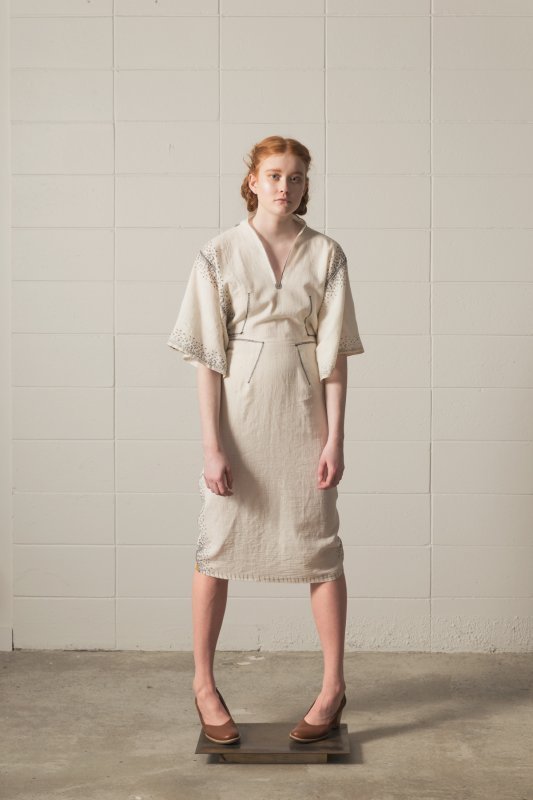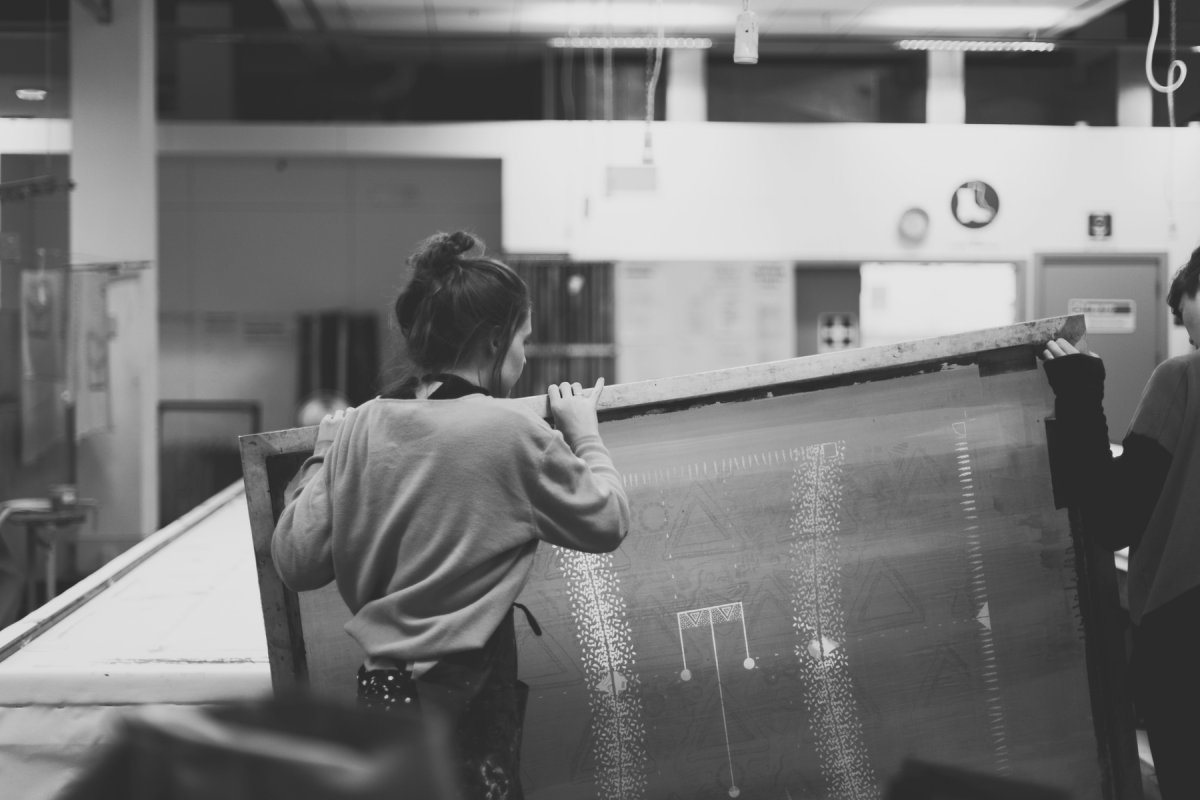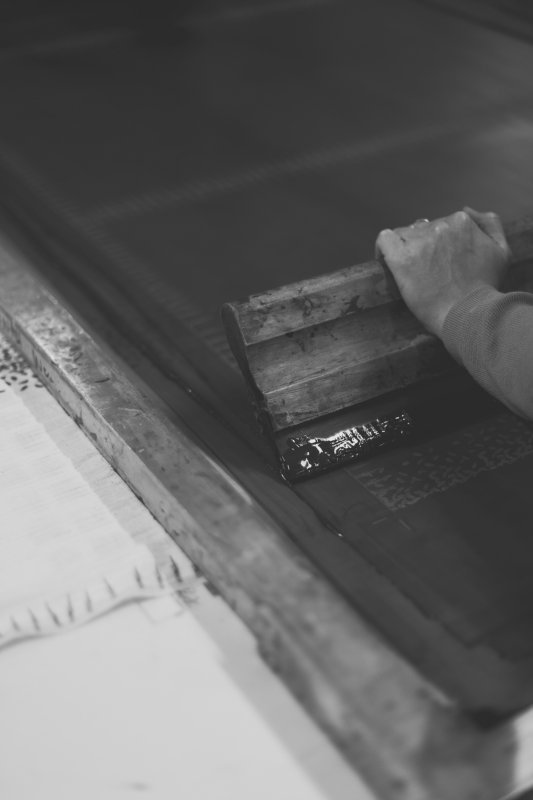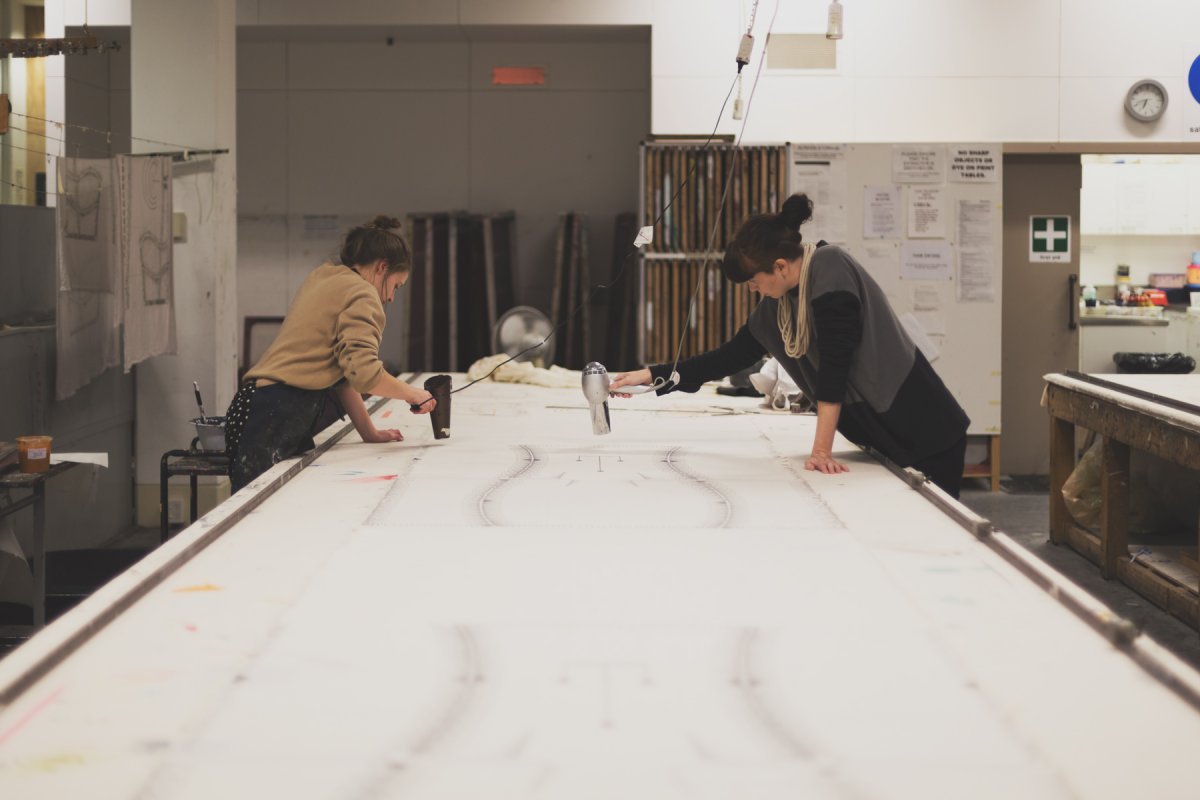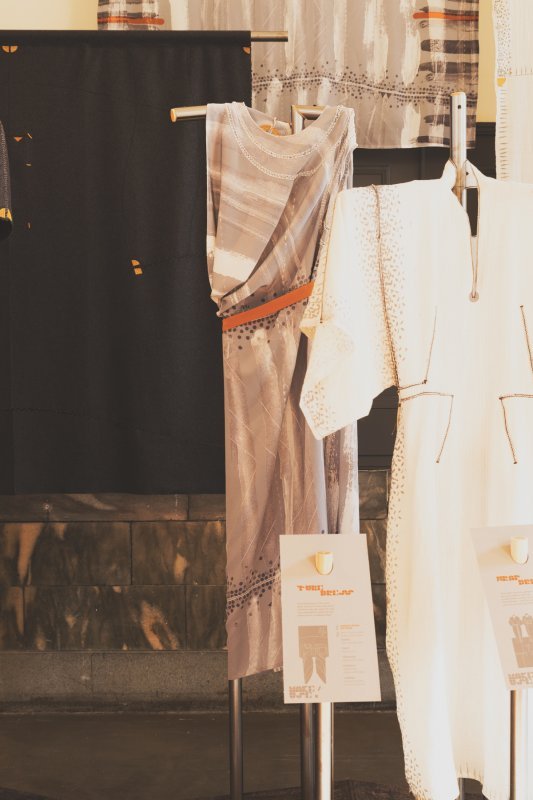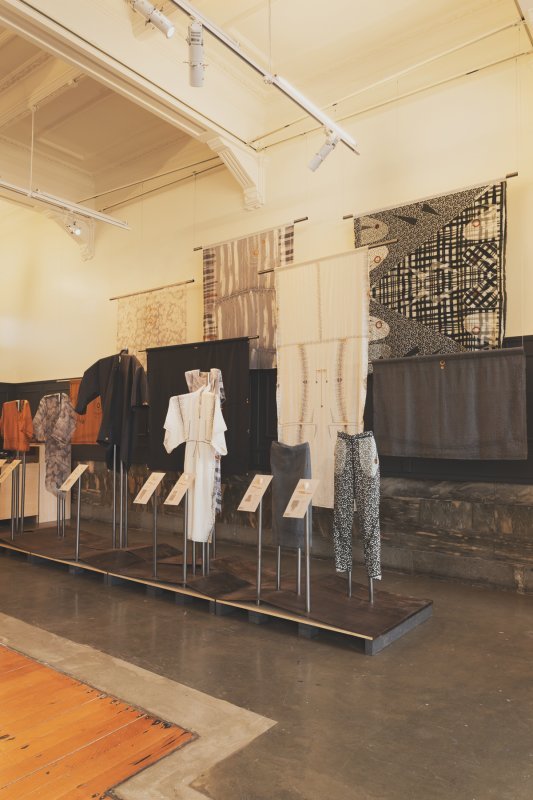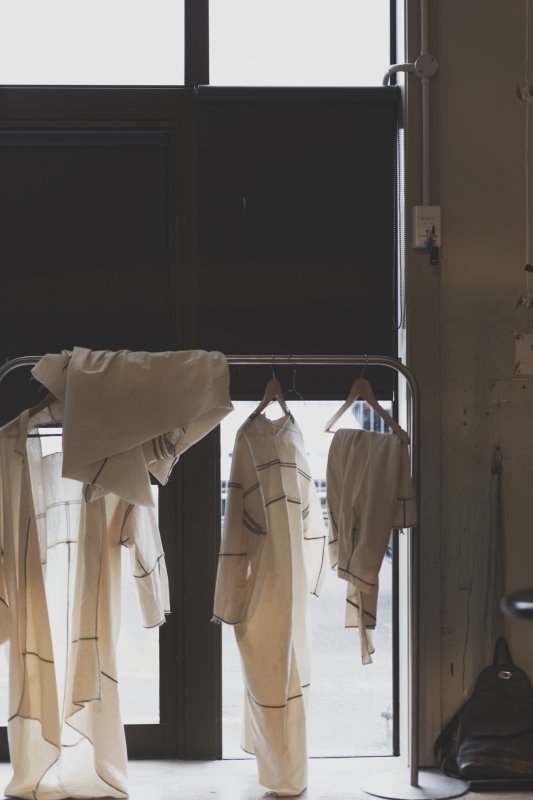Wrap Dress
This Dress wraps around the hips and overlaps at the back for a fitted silhouette with a Kimono style wide sleeve
Considerations
The width of the cloth is approximately the length of the sleeves. It also determines the amount the garment wraps around the hips. Ensure the width of the cloth can encircle your hips plus enough overlap to ensure modesty (if that is your thing).
Recommendations
The drape or stiffness of the cloth will alter dramatically the final look of the garment. This dress works well in most light to mid-weight fabrics.
The Wrap Dress shown in the photo is made of screen printed, hand spun and loomed cotton from Josi Faye. All the edges are pre-finished using digital embroidery, all joins are machine stitched with a decorative stitch and the form is modified through the body and sleeve swap. The dress in the photo uses 155cm of 111cm wide cotton. The model is a NZ size 10

Making the Wrap Dress
There are three methods of using the Make/Use system - Pattern, Print or Template:
Pattern
Simple line diagram to print onto paper at full scale – the closest to using a traditional dressmaking pattern. Good if you have fabric at the exact width or know how to use software to change the pattern to fit. Available as ai file (Adobe illustrator/Inkscape for modifications), or pdf. Print tiled and stick together, or take to a large format printer.
Print
Screen printing or digital printing files to put the patterns directly onto fabric. Good if you want a printed garment, some of the guide for making the garments are embedded in the print file to enable an easier understanding of the making process. Can be expensive.
Templates
Lasercut templates printed onto rigid paper or card that allow a maker to draw required patterns onto fabric. This is a modular system that enables a Make/Use garment to be made from any width fabric. Low cost if using printed method, great for students of all ages and home sewers.
Making the Wrap Dress from a pattern
You will need: 147cm long of ~114cm wide cloth, a pattern printed at 100%
You can print the file as is from the pdf and set your printer settings to 'tile' or 'poster', and 100%, tape your pieces together and you have a full scale pattern. You can also open and modify the pattern in Illustrator, Inkscape or any similar vector based program to fit the width of fabric you want to use. If you do that, be careful to not select the neckline before stretching/shrinking it to fit the new width.
This pattern can be made from any width cloth, assuming you ensure the width will wrap around your hips with sufficient overlap at the back of the garment, and assuming you don’t make any additional modifications to the design such as pleats/gathers etc, and also determines the span from sleeve hem to sleeve hem.
Find a fabric you like the look and feel of, make sure it is something you can sew based on your abilities and equipment, and away you go!
Downloads
Wrap Dress Pattern PDF
Making the Wrap Dress from a print
You will need: 156cm long of ~111cm wide cloth. Access to screem printing facilities
The attached files were designed for Screen Printing (though could be used for digital printing). The files are available in two formats .tiff and .pdf, and as a whole (very) large file, and divided into three which will fit on large standard size repeat print screens. If you are smaller than about 100cm around your hips you will not require the 3rd screen.
The fabric chosen (and ink colour) for printing on will determine the overall look of the garment. The Wrap Dress shown in the images was printed on a light weight cotton. If you like you could modify the print to suit a different width fabric in Photoshop, or take it as a starting point to have a play with other possible prints inspired by the beaituful work done for this project by Greta Menzies. Enjoy!
Making the Wrap Dress from Templates
You will need a fabric of your choice, Measure your shoulder to waist and multiply by 4; you will need a pice of cloth approximately that long. A4/A3 printer or Lasercutter, Paper or card.
Each Make/Use garment made in this method is unique to both the fabric and the user. The length of this dress is determined by the shoulder to waist measurement of the wearer; a favourite fabric can be used to make the Wrap Dress and drastically alter its appearance; new iterations can be created by combining templates in ways dreamt up by the maker/user. The possibilities are literally endless.
- Using the Wrap Dress Grid file as a guide, mark half way between edges of fabric for Fabric Centre Line
- Measure on your body your hip circumference and divide by 4 (A) mark either side of the Fabric Centre Line.
- Measure on your body from your shoulder to your waist - this determine how wide your sleeve is on your garment and the length of the skirt.
- Measure on your fabric 1 x B to Shoulder Line, 1 x B from Shoulder Line to Waist Line, then 2 x B from Waist Line to hem of dress
- Mark horizontal and vertical lines with tailors chalk.
- The intersections of Fabric Centre Line and Shoulder Line, as well as ¼ Hip Circumference and Waist Line are key anchors for placing the templates.
Print: Print out using a standard printer the files only A4 and/or A3 paper or card and cut out the dotted fill. Follow the instructions on the pages
Lasercut: Download files and have laser cut on 2mm card according to lasercutter specifications.
- Line up desired templates with grid and follow instructions printed on them.
Downloads
wrap-dress-pattern-with-grid.pdf
Print files (pdf):
Print template: round neck
Print template: wide neck
Print template: collar neck
Print template: Vertical shaping (left)
Print template: Vertical shaping (right)
Print template: Dress dart (left)
Print template: Dress dart (right)
Print template: body rotation (left)
Print template: body rotation (right)
Lasercutting files on dropbox (ai)



